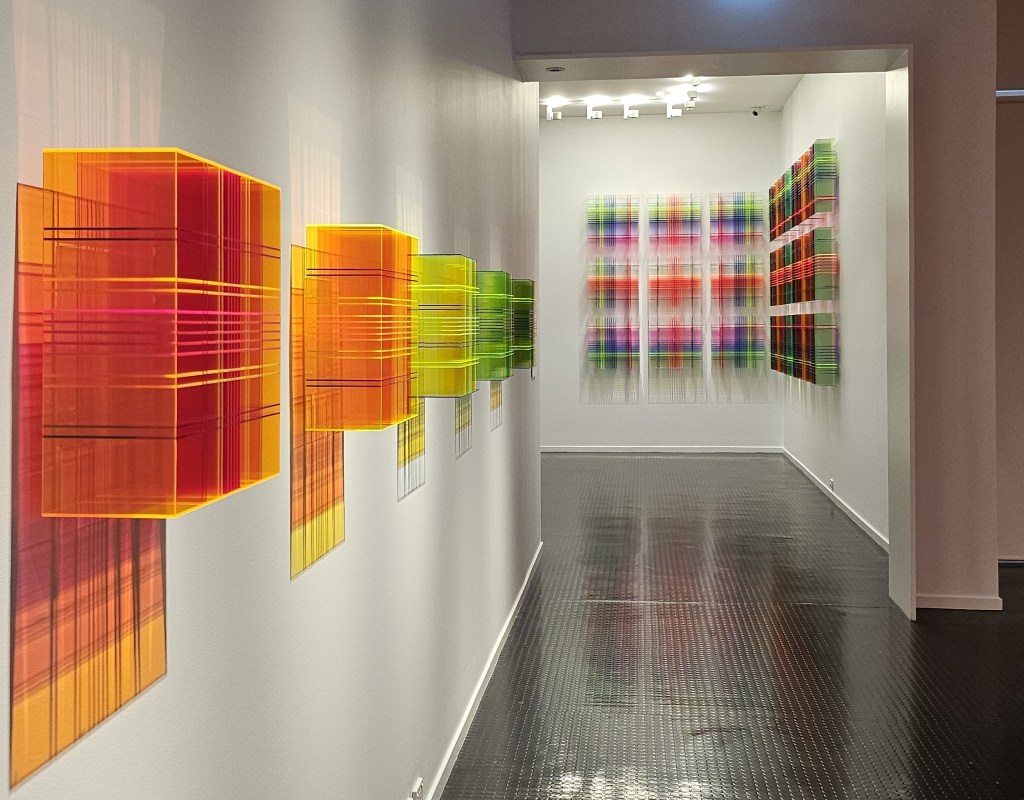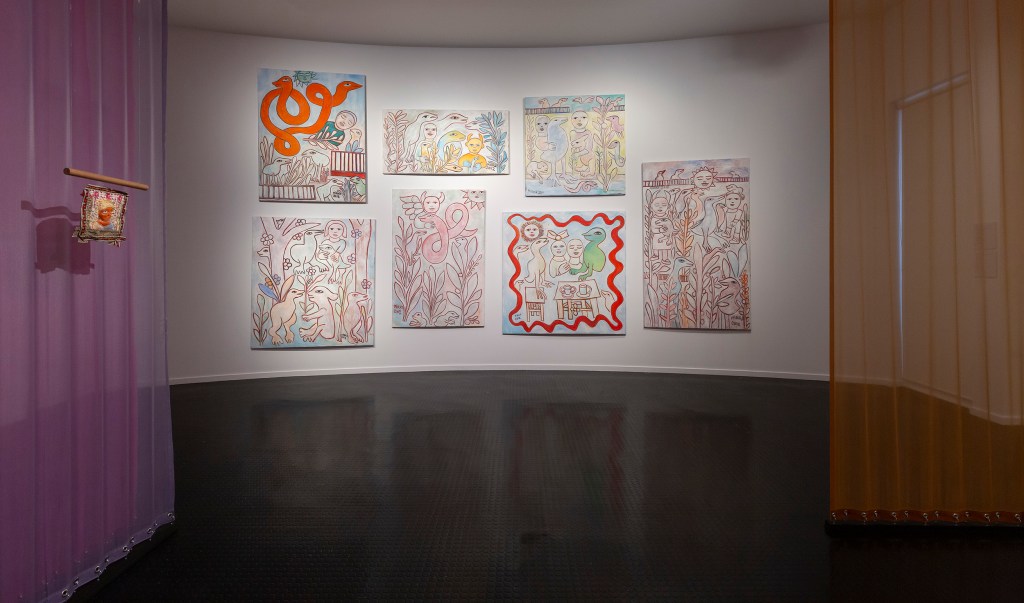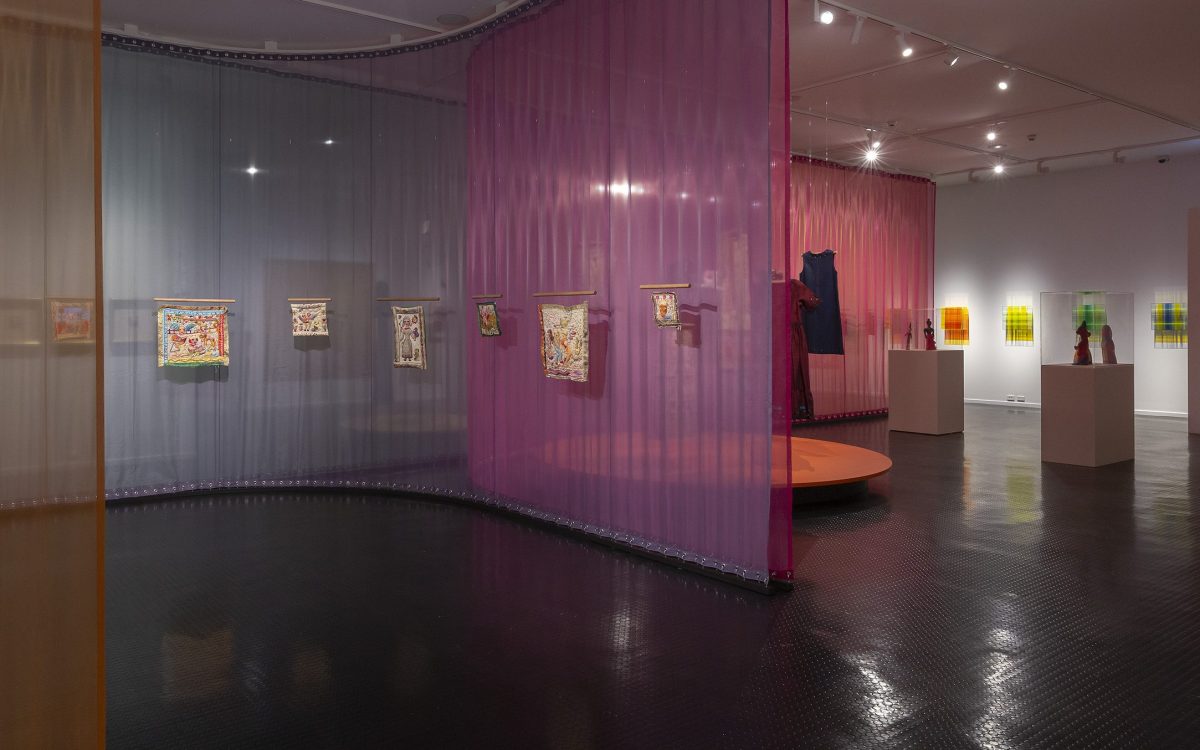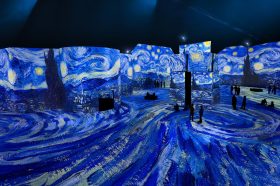According to her son and gallerist William Mora, Australia’s beloved icon, Mirka Mora (1928-2018), notoriously hated collaborations. But, as it turns out, Mora’s collaboration with Australian fashion label Gorman in 2016 and 2018 was one that the artist enjoyed and embraced, making the exhibition LISA GORMAN + MIRKA MORA: To breathe with the rhythm of the heart at Warrnambool Art Gallery a rare gem that channels the poetics and philosophy of both creatives.
Along garments from the GORMAN X Mirka clothing line, the exhibition brings together wall sculptures by Lisa Gorman, and significant paintings, works on paper, dolls, figures and an exquisite collection of embroideries by Mora.
Gorman is best known as a fashion designer and founder of the Gorman brand in 1999, but she has also now ventured into the field of installation and contemporary sculpture. Indeed, LISA GORMAN + MIRKA MORA shows that Gorman is not only talented in fashion design, but also a master of colour and light. Her acrylic wall installations create auras of light that radiate beyond their physical boundaries, most outstandingly in REPEAT, featuring 27 of these acrylic panes in perfect formation.
With Gorman’s installations, Mora’s embroideries and the collaborative clothing collection, the exhibition embodies the myriad interpretations and processes of textile and weaving. While Mora’s embroideries adopt the painterly qualities of her compositions, Gorman’s installation breaks down the process of weaving into the arrangement of lines in space.

Several of Mora’s drawings and Gorman’s sculptures resonate with each other throughout the exhibition, which was curated by Warrnambool Art Gallery Director, Aaron Bradbrook. The neons in Easter Drawing (1980), We Float In Our Dreams (1980) and My Imaginary Friends (1980), among others, uphold Mora’s youthful quirk while dancing in symphony to Gorman’s acrylic weaves.
Mora’s paintings are often awe-inspiring to behold by themselves, but it is when they are situated within an “environment” that the storytelling really leaps off the canvas, as was the case with MIRKA at the Jewish Museum in 2021-22. With this in mind, Studio Bright‘s exhibition design has successfully added another accolade to its name with LISA GORMAN + MIRKA MORA.
Inside the Warrnambool Art Gallery, sheer curtains in hues of peach, grape, orange and dark turquoise not only help visitors navigate the exhibition, but also set up intimate coves in which to encounter Mora’s embroideries. (The architecture and interior design team was also behind the major Barbara Hepworth: In Equilibrium exhibition at Heide in 2022.)
Despite the open airiness created throughout most of the exhibition, however, the final works, located around a narrow partitioned passageway that loops visitors back to the entrance, could have been afforded more breathing room. They include Young Lovers (1975), a rather contemplative oil on masonite of twins conjoined to a fish-like body, which deserved more than its relegated corner. To its left-hand side, the same goes for Angel Child with Friends (2005), a work rich with spirited motifs, its tactility akin to clay or terracotta and its presence like that of a large-scale mural.
Read: Exhibition review: Nadine Christensen, Buxton Contemporary
An example of effective installation can be seen within the exhibition itself, with a large concave wall (if curved walls are becoming popular exhibition devices I’m all for it) hosting seven of Mora’s large-scale works in creamy pastel hues. Orange Serpent (2013), Horned Angel with Serpent Talk to the Sun (2012), Couple Dreaming (2012) are among the pieces offering a majestic storybook moment filled with passion, love and hope.

LISA GORMAN + MIRKA MORA: To breathe with the rhythm of the heart is on view at Warrnambool Art Gallery until 17 March; tickets adult $18, children $6.





